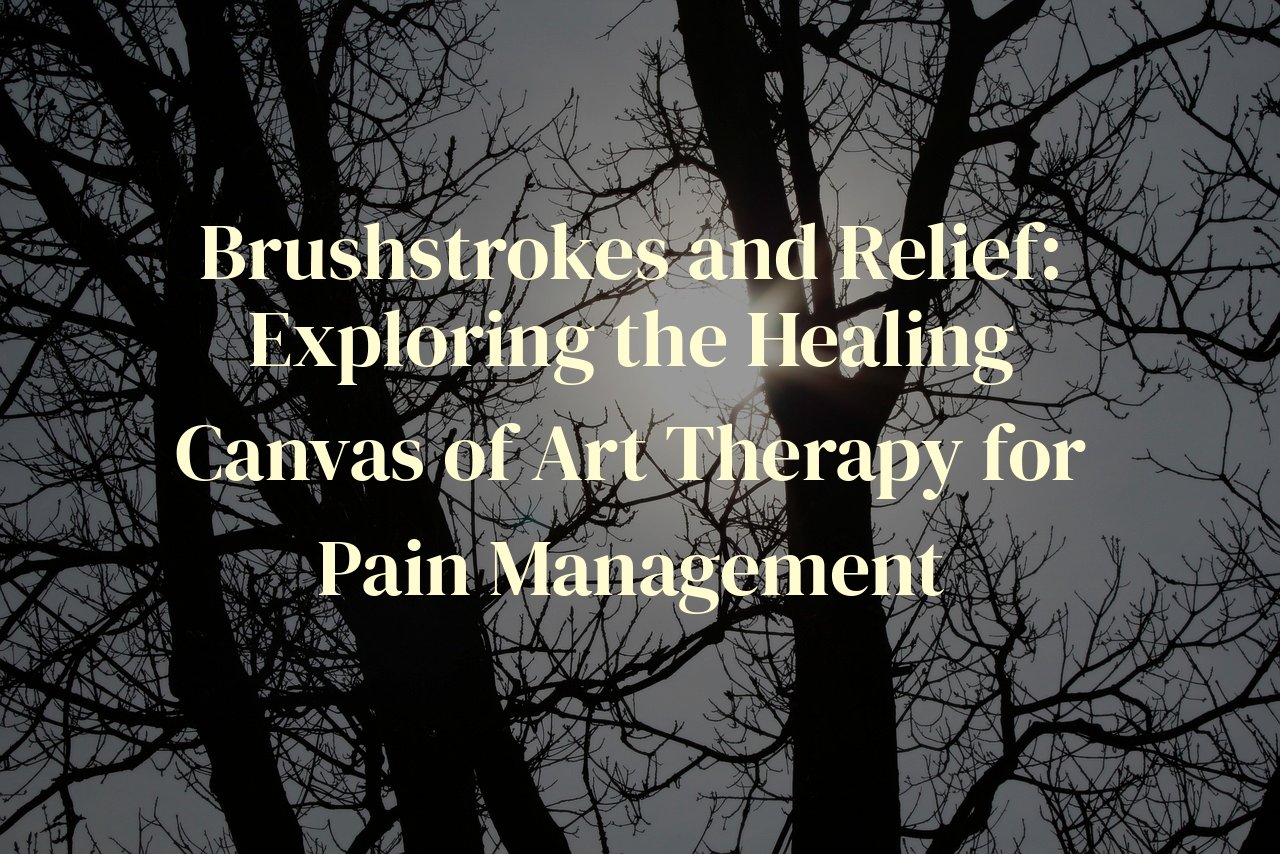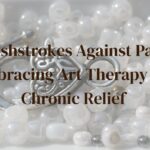
The intertwining of art and healing stands at the heart of an innovative approach to pain management. ‘Brushstrokes and Relief’ dives into the transformative role of art therapy in easing discomfort, empowering readers to explore an often-overlooked avenue of wellness. In this post, readers will embark on a journey through the concepts and real-world applications of art therapy, unlocking insights on how it can provide not just solace, but also tangible reductions in physical pain. Through a blend of scientific research, expert perspectives, and anecdotal evidence from personal experience, we reveal how embracing creativity can be a pivotal step towards achieving a holistic balance in managing chronic pain.
Table of Contents
The Palette of Pain: Understanding the Basics of Art Therapy
The essence of art therapy lies in its ability to transform the abstract landscape of pain into a tangible form of expression, offering both a mirror and a window into the nuanced experiences of the individual. At its core, art therapy is a therapeutic technique rooted in the belief that creative expression can foster healing and mental well-being. It’s a form of psychotherapy that uses art media as its primary mode of communication.
From my personal encounters as a blogger and an individual who has watched others walk this vivid path, I have observed art therapy to be a sanctuary for those who are often at war with unrelenting discomfort. The process involves painting, drawing, coloring, sculpting, or engaging in other artistic endeavors. This sensory exploration facilitates non-verbal dialogue, where words fall short, allowing individuals to symbolize complex emotions and internal conflicts onto a canvas or a piece of clay.
Key components that create the colorful palette of art therapy include self-exploration, emotional release, and cognitive restructuring. Through self-exploration, individuals delve into the recesses of their psyche, unearthing thoughts and sentiments that otherwise might remain buried. Emotional release offers a cathartic pathway, where the act of externalizing pain through creative endeavor can often lead to a sense of relief and newfound clarity. Finally, cognitive restructuring in the context of art therapy encourages a reexamination and transformation of negative thoughts and belief systems that often accompany chronic pain, replacing them with more constructive and hopeful perspectives.
In the quietude of the studio, amidst the smell of wet paint and the soft textures of paper, I’ve seen art therapy unlock the shackles of pain, easing the burden that so many carry. It guides practitioners through a journey of introspection and discovery, revealing the resiliency and evolving narrative of their lives. Emotion, empathy, and a vivid spectrum of human experience color the palette of art therapy – each brushstroke a step towards managing the intangible ache and crafting a more harmonious existence.
Drawing Out Discomfort: Art Therapy’s Mechanisms in Pain Alleviation
The intersection of art and healing is a profound space where the silence of pain finds its voice through creativity. Art therapy isn’t simply about the aesthetic product, but rather, it’s about the mechanisms that facilitate the alleviation of pain. One such mechanism is the concept of ‘distraction’. By focusing on creating something beautiful, the mind is given a break from the relentless focus on pain. The canvas becomes a vessel, not only for the expression of discomfort but also for its temporary relief.
Another therapeutic aspect is ’emotion regulation’. Art allows for the non-verbal expression of feelings and experiences that might be too difficult to articulate with words. For me, each stroke of the brush has been a way to externalize the internal turmoil caused by chronic pain, offering a form of relief that medication alone could not provide.
Then there is the ‘behavioral activation’ that inherently comes with engaging in art. Even on days when pain seems insurmountable, the mere act of picking up a pencil or brush can serve as a commitment to engage with life, to move beyond the role of a passive sufferer to one of an active participant in one’s healing journey.
The ‘mastery experience’ is yet another component. As art skills are developed and honed, a sense of achievement emerges. Seeing tangible progress in one’s artistic abilities can be incredibly empowering and can contribute to a more positive pain coping strategy.
Lastly, we must not overlook the ‘social connection’. Art therapy sessions often take place in group settings, providing valuable support networks. Sharing one’s work, struggles, and successes can foster a sense of belonging and understanding often elusive in the solitary confinement of chronic pain.
In my personal journey with art therapy, each of these elements has played a pivotal role. It wasn’t a miraculous cure, but rather a collection of small victories that, when woven together, formed a tapestry of management strategies helping me redeem a sense of normalcy amidst the chaos of chronic pain.
A Personal Canvas: My Journey with Art Therapy and Chronic Pain
Embarking on a journey of self-healing, I discovered art therapy as a companion through the labyrinth of chronic pain. My experience with art therapy began in an unconventional manner. Struggling with the relentless presence of pain, I found myself at the crossroads of traditional medical treatments that provided little alleviation. Out of options and filled with skepticism, I dipped my brush into the world of art therapy, driven by a desperate hope for relief. I remember the first stroke on the canvas – it wasn’t just paint; it was the expression of suffering that had no words.
As my journey progressed, I found solace in the layers of paint, each layer representing a level of discomfort, a story untold. The act of creating art became an intimate process. The once empty canvas mirrored my emotions, transforming through colors and shapes as I painstakingly laid out my pain. Sharing my artwork with my therapist created a new language, one that transcended the spoken word, enabling me to communicate with profound honesty.
Throughout the sessions, art therapy wasn’t simply a distraction but a form of expression that allowed me to confront my pain directly. With every session, the grip of chronic pain seemed to loosen, as I learned to channel my focus away from the intense sensations and towards the act of creating. The process didn’t erase the pain, but it endowed me with a sense of empowerment over my condition. The more I drew and painted, the more I discovered unexpected islands of respite that broke the monotony of discomfort.
The colors I used often reflected my mood and pain levels. Dark, brooding shades encapsulated my worst days, while bright hues danced across the canvas on the better ones. Art therapy guided me toward acknowledging and accepting the fluctuations of my chronic pain. It wasn’t a cure, but it provided a coping mechanism that was missing from my life. As I embraced this new form of therapy, my relationship with pain transformed: it was no longer a defining feature of my existence but a part of my life that I could depict, manipulate, and understand through my art.
Reflecting on my path with art therapy, I see a rich tapestry of personal growth and pain management. This method has not only been therapeutic but has also granted me a deeper insight into my own resilience. The artworks, filled with the truth of my experiences, stand as testaments to the ways I’ve learned to mitigate and reframe my pain. My journey with art therapy and chronic pain has been enlightening, shaping a narrative of healing that I continue to weave with every brushstroke.
Clinical Colors: What Research Says About Art Therapy for Pain
As the brush glides across the canvas, something remarkable begins to blossom—not just an image born of paint and creativity, but also a potential realm of pain relief. Over the years, research into art therapy as a pain management tool has painted a promising picture. An array of studies has explored the pain-relieving brushstrokes afforded by the engagement in artistic expression. For instance, a study from the American Journal of Art Therapy found that patients with chronic illnesses experienced significant reductions in pain and anxiety levels after participating in art therapy sessions.
Another more detailed investigation, published in the journal Pain Research and Management, highlighted the impact of art therapy on cancer patients. The study reported that after art therapy intervention, there was a notable decrease in pain symptoms, demonstrating art therapy’s potential as a complementary treatment alongside traditional pain management regimens. This aligns with the gate control theory of pain, suggesting that art can help to ‘close the gate’ on pain signals by providing a mental distraction and allowing for cognitive reappraisal of discomfort.
Drawing from a more neuropsychological angle, research using functional MRI (fMRI) to observe the brain’s activity during art-making revealed that engaging in this creative process resulted in activation of brain areas associated with pain modulation, namely the prefrontal cortex. This indicates that art therapy might instigate a shift in neural pathways that can have a calming effect on pain perception.
While empirical evidence consistently sketches an increasingly defined silhouette of efficacy, personal testimonials further color the canvas. My own journey with art therapy, interwoven within the clinical data, reaffirms the transformative potential of painting and drawing to not only distract from but also process and externalize the internal experience of pain. Each brushstroke offered a language beyond words, a visual expression of the pain that words couldn’t capture, fostering a sense of control and catharsis.
Current research advocates for the integration of art therapy into pain management plans, emphasizing the importance of a multimodal approach. The blend of qualitative and quantitative data underscores its value, helping health professionals see beyond the black-and-white of traditional treatments and into the vivid spectrum of holistic healing. In the evolving landscape of pain management, art therapy emerges as a therapeutic modality with the power to turn the abstract into the tangible, offering respite in hues of hope and resilience.
Painting a Future: Integrating Art Therapy into Pain Management Plans
The future of pain management may very well be colored with brush strokes and shaded with personal expression, as art therapy gains recognition as a potent ally in the holistic treatment of pain. Integrating art therapy into pain management plans isn’t a distant dream but a rapidly approaching reality that blends creativity with evidence-based medicine. In my own journey, art therapy unveiled a pathway to alleviate chronic pain, providing an emotional outlet and a distraction from my persistent discomfort. It wasn’t merely a distraction though; as I painted, I felt as if each brushstroke was a dialogue with my pain, allowing me to express what words could not.
To effectively integrate art therapy into pain management, it’s essential to recognize its multifaceted role. Beyond traditional therapy, art serves as a non-verbal language for emotions and experiences that are often too difficult to articulate. Health practitioners can collaborate with certified art therapists to develop personalized pain management plans that encourage patients to engage in painting, drawing, or sculpting as a form of expression and coping mechanism.
While the personalization of therapy is crucial, the establishment of art therapy programs in healthcare settings also needs standardized protocols to ensure efficacy and accessibility. This includes structured sessions, goals setting, and tailored activities to match the individual’s physical limitations and pain levels. Clinical studies remain a pillar to refine these protocols, with ongoing research providing the statistical backbone necessary for widespread adoption and insurance coverage.
Art therapy’s integration involves interdisciplinary teamwork. Pain management specialists, psychologists, and art therapists must come together to create a seamless transition for patients moving between various modalities of treatment. Education and workshops for healthcare providers will sow a deeper understanding and appreciation of art therapy’s benefits and methodologies. As such, engagement between all stakeholders, including patients, becomes a collaborative mural depicting everyone’s commitment to pain relief.
Lastly, the expansion of digital platforms offers an unprecedented opportunity to overcome physical barriers, making art therapy more accessible for those with mobility issues or in remote areas. Telehealth services can embrace art therapy as part of their offerings, enabling virtual consultations and guidance that empower patients to continue their therapeutic art-making within the sanctity of their own homes. The future is ripe with potential; it’s time for us to pick up our brushes and paint a pain management landscape that is as compassionate as it is colorful.
Conclusion
In conclusion, the tapestry of art therapy in the realm of pain management is both vibrant and deeply impactful. This exploration has shed light on the unique ways that art therapy can address pain, blending creativity with care. For those seeking an adjunct to traditional pain management or an alternative coping mechanism, the avenues of art can offer a respite for the mind and solace for the body. As we close this chapter, we hope that the strokes of insight presented here inspire a newfound appreciation for the healing power of art in every reader’s personal health narrative.



